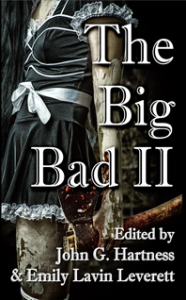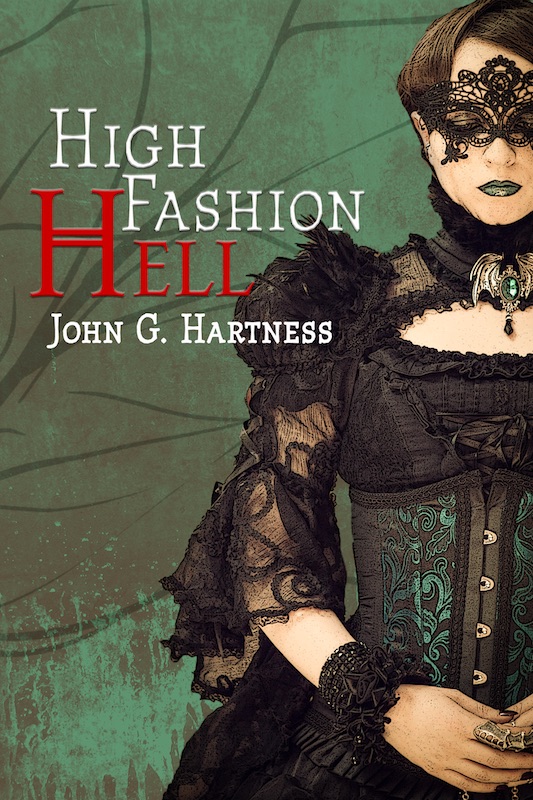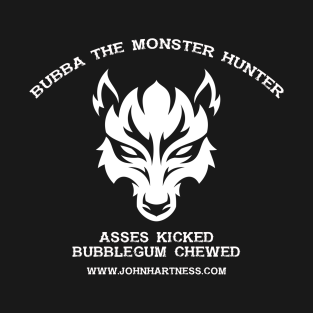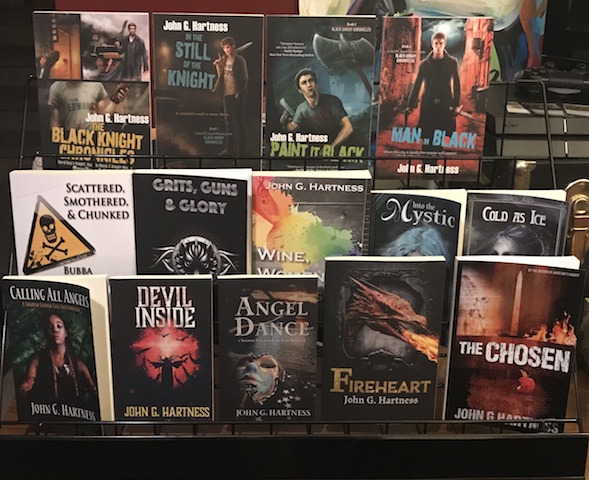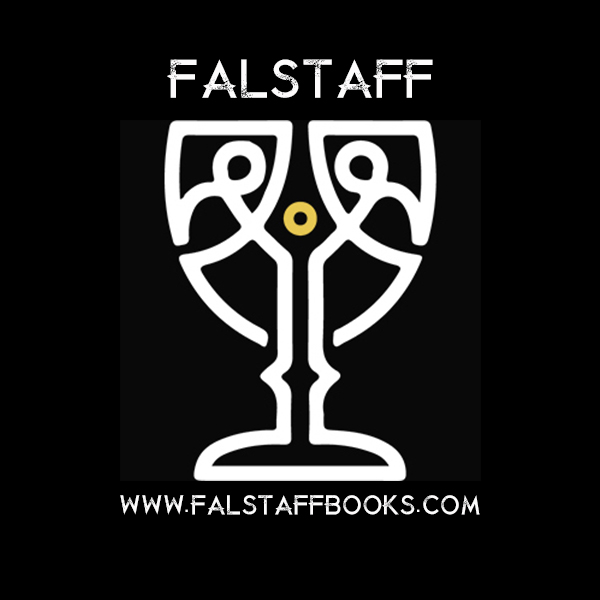by john | Feb 17, 2015 | Guest Blogs, Writing
Welcome back Selah Janel to talk about Women in Horror Month! For more Selah, check out her website.
Although I grew up something of a scaredy-cat, admittedly I’ve always been drawn to the horror genre. I was the one always begging friends to tell me blow-by-blow details of the movies I wasn’t allowed to see, the one reading the descriptions of horror movies off boxes in video stores when my parents weren’t looking, the one who may or may not have run an underground library for R.L. Stine titles and urban legend collections out of my locker in Junior High. I think we take for granted that women seem to be designated as chainsaw fodder or final girl in the genre, when there are truthfully a lot of other roles if we keep an open mind and are open to a lot of different titles. I also don’t think it’s that unusual that women make awesome horror authors. I could give you the standard answer of how we’re emotional creatures and at the end of the day we always have to be aware while walking down the street, when we’re meeting someone new, when we have to walk away from a table and leave our drink unattended, when protecting our children, etc.
However, I think there’s another reason women of my particular generation are drawn to horror and happen to be good at it. It’s a little thing I like to call the 1980’s.
Stay with me here. Yes, the eighties were time when slasher films ruled and women’s roles tended to be reduced to victims for the most part, but that’s not what I’m talking about. To really get why my ilk are into the genre, you have to go to a whole other medium entirely: children’s cartoons.
Eighties nostalgia has gotten a lot of flak over the years. Yeah, a lot of the cartoons were made off toy lines and they weren’t always drawn very well. A lot of the Saturday morning installments didn’t even last all that long, if a whole season. What they were, however, is utterly, completely, cracked out.
Let’s just take a look at some of my early influences, eh? The first Care Bears movie features a book that could be considered a riff off the Necronomicon. Heck, the second movie contains shapeshifting demons and a variation on possession. Yes, the villains are either dealt with or reformed, but can you imagine that even existing in a theatre for four-year-olds these days? My Little Ponies had gateways to other dimensions and a dark ooze that nearly destroyed Ponyland. Rainbow Brite had her color drained on at least one occasion, a Lady Lovelylocks villain went into a deep coma-like sleep and nearly died. One of the Misfits in Jem nearly died from strange plant scratches. She-Ra was repeatedly kidnapped, drained of her powers, almost-tortured, and who knows what else. The Ewoks were forced into slavery on their cartoon at certain points, and one of the girl Ewoks learned quickly not to try to play magic to her advantage. Villains and sidekicks alike nearly had their souls sucked out in a few franchises and it was just another Saturday for all us little girls watching. For the puppet crowd, Jim Henson’s The Storyteller featured devils and heroine-beating trolls, and the Skeksis of The Dark Crystal haunted our nightmares for ages because of their soul-sucking abilities and we loved them for it. Disney regularly played cartoons from their vaults, including things like where Pluto dreams he’s been sent to hell and is tortured by a bunch of animated cat devils.
The Real Ghostbusters just plain existed. Seriously, this show was amazing for how bizarre it was until it was dumbed down for little kids. I still remember an episode where the ghostbusters got sent to another dimension where ghosts hunted people and their ghost counterparts chased them down like criminals. It was intense, mind-bending stuff. In short, beautiful.
The nineties tried, but by then everything was either taking existing franchises and turning the characters into children, or trying slightly different variations of the same ol’ same ol’. It was always strange to me that people got so freaked out about Tales from the Cryptkeeper, when things like that had been a part of my entire tender youth, and no one had complained because “they were just cartoons based on toys.”
My point is, those things were considered normal for little girls or for girls and boys alike. I admittedly question some of the gender divide, though, because I knew a lot of boys who collected She-Ra figures along with He-Man and quite a few little girls who could quote you episodes of The Real Ghost Busters. Along with all the sparkly, we regularly got our dose of freaky, otherworldly danger. In some cases, it was like Lovecraft was reincarnated as an animator. Whether this was people groping for a plot or just throwing something out there, who knows, but it gave us permission at a very young age to let our weird out and not be apologetic about it. It was okay to be villains who did whatever was necessary, to be heroes who were kind, yes, but still had to go to great lengths and nearly lose their souls to get their way. Adventures were better the more elaborate and the darker they became.
Yes, there were gender divides in the toy aisle, but in a lot of ways, girly cartoons were pretty subversive for their time, more so than a lot of the things I’ve seen these days. The plots were not always great, the art was eh, true, but the weird factor was amazing. I’ve talked to a lot of women in my age grouping who laugh and remember a lot of those episodes fondly, either because they loved them or because they were traumatized by them and now find it amusing. Some have even passed things like the original two Care Bears movies onto their own daughters. A lot of these girls graduated to appreciate Stephen King and Anne Rice alike, to not just want to be the chick who hangs out with vampires, but who had ambitions of maybe, someday, becoming the head vampire.
These days, yes, women write horror from a female standpoint at times, but I think we don’t take into consideration that that isn’t the only way we can write horror. Maybe, if we started letting our girls get a dose of weird early again, there wouldn’t be such a barrier for them to the genre. It would be just another day at the toy aisle, just another Saturday of cartoons. For those of us already grown up, yes, we definitely have different takes on the genre, and some of them will inevitably have to do with gender. However, we also have a huge universal appreciation for the dark and the bizarre. Why? Why not? After all, we were brought up that way.
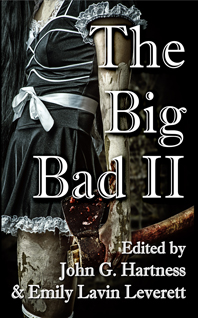
by john | Feb 6, 2015 | Business of publishing, Vampires, Writing
I use Selah Janel’s story in The Big Bad volume 1 as both a cautionary tale on everything NOT to do when submitting to an anthology, as well as a cautionary tale on the benefits of being friends with people in the industry, most notably editors or people who might one day become editors. When Selah and I became friends, I had no intentions of editing anything, much less a series of horror anthologies. But I did, and when it came time to start reading for The Big Bad, I got an email from Selah saying (basically) “I have a story, but I’m running a little late, and a little long. Can I have a couple weeks?” I said “Sure, send it along when it’s ready.” A month later I get another email with a story attached saying (basically) “Here is it, sorry it’s so late, hope you still like me, hope you can use it.”
It was almost exactly 1,000 words OVER the max allowed word count for the anthology. I almost round-filed it immediately, but she was my friend, and that guaranteed her at least one paragraph’s worth of leniency. You can see why I don’t have many friends – it only got her a paragraph. I read it, then waited patiently as Emily (my co-editor and partner in crime on these anthologies) read it. She emailed me and we agreed that the story had done almost every single thing wrong to get included. It was late, it was too long, it was another friggin’ vampire story. We wanted any excuse to hate it.
Sidebar – when you’re accepted into an anthology, after a few acceptances, you stop asking “Really?” and start asking “Where will you put my story?” There are three pieces of prime real estate in an anthology – the first story, which gets read by the most casual readers, the center story, which gets read by a lot of passersby who crack the book open randomly and pick a page, and the final story, which is the closer and wants to be a big finish.
Selah’s story was the closer for Big Bad Vol. 1. It was, quite frankly, one of the best damn vampire stories I’ve ever read. I looked for any excuse not to love it, and she didn’t give me one. I’ve told lots of people at lots of panels at lots of conventions that you can either follow all the rules or be so goddamn amazing that they don’t apply to you. Seals Janel is an amazing writer and I’d read her grocery list. Here’s her story behind the story for Big Bad 2. And no, she didn’t get the closer spot in BB2, we dropped her in the second spot from the beginning, because editors are evil. You see, if you download the free sample from Amazon for the ebook, you’ll get cut off before Selah’s story ends. And that’s going to guarantee a high conversion of samples to sales. 🙂
Plain and simple, I love vampires. There’s a lot of versatility there, a lot of things to explore. One of my favorite vampire movies is The Lost Boys, and admittedly my story in the first Big Bad, “Real Wild Childe” came out of one of the few beefs I have with the original movie: the horrifically lame female characters in cliché roles. While I admire Jami Gertz and Diane Wiest and they’re great in the film, Star and Lucy’s functions are to just kind of be there as love interest and Mom. It’s a shame, because a lot could have been done with those archetypes. The sequels never really bothered to correct the female role issue, either, so it became a mission to write a vampire story where the girls could keep up with the boys and then some. Admittedly, “Real Wild Childe” was also my chance to warp the vampire romance genre beyond recognition, but a lot of it was the chance to have fun with some renegade vampire characters while beefing up the female roles. In a lot of ways, I did a whole reversal with putting Rave at the mercy of all the women in his life, vampire and human.
When the second volume was announced, I was sure I was going to sequel that story. I was excited to keep exploring Rave and Sin’s twisted relationship, as well as Addington’s vampire problem as a whole. Unfortunately, it became evident very quickly that it would be way too much for an anthology story, and I already had the habit of antagonizing the great Hartness with my inflated word counts. I didn’t want to leave that world behind, though, so it occurred to me to go in the other direction and prequel it.
I mention in the original story that Rave and Asha’s sire is their mother, and she’s not a particularly motherly type. Amanda was the perfect character to explore not only the feminine role of mother, but also to mash that up against what a vampire was, and why a typical 1950’s housewife would even want to become one. My research led me on a winding road, and I found the perfect excuse for an underground, mother-centric vampire cult: fear of communism and all-out nuclear war. What if a protective instinct was so great, that you’d do anything to ensure your family line and the wellbeing of your kids, even if it meant killing and drinking blood?
That was a great start at developing the cult of The Family and the character of The Patriarch, but it still didn’t quite mesh up with the Amanda in the original story. What kind of a person would turn into a manipulative, jealous vampire who wanted to clamp down on her kids and rule over them throughout eternity? After all, most parents are more than willing to kick the birds out of the nest at some point, and Amanda had never come across as a loving maternal figure.
As I began writing, I slowly discovered a character who was burnt out, frustrated, and felt overlooked. Her insecurities about her own life fed her jealousy that landed on everyone: her husband’s employees, her friends and fellow cult members, even her own children. She was desperate to be noticed, true, but also desperate for something else. It all made me wonder, what would happen if a mother didn’t necessarily have children because of a great love for them, but because they complemented her idea of what life should be like? What if she looked upon them as accessories that she owned, accessories that weren’t supposed to ever get out of line or go against her thinking? What if that craving for power gave her confidence to try out her powers in increasingly controlling ways, all under the guise of it being in everyone’s best interest? And what would she do if her precious family/accessories dared to try to go against her?
And what would happen if she found out that they may possess the same sort of darkness she did?
Exploring her manipulative nature in “A Family Affair” fascinated me, and I slowly grew to view Amanda as less of a madwoman and more of a complex character. If the story in the first volume was me riffing off my love for the bad boy type vampire in The Lost Boys and an attempt to play with the idea of a human love interest, Amanda became my anti-Lucy in The Big Bad 2. She still loves her children, but for the wrong reasons, and she’s desperate to retain something of herself as she watches the world and her family start to plot on without her. Her evil is more internal, but she still sheds a considerable amount of blood and has no guilt doing it. She freely plays with her family’s minds, and forces them down a dark road that will have significant repercussions decades later. Amanda’s an intense character who will get her way at any cost. She’s dangerous to most of those around her. She’s also a lot of fun to write.
It was also interesting to explore Rave and Asha as humans, to really tinker with who they had been before they became runaway delinquents. Although they’re at the mercy of their mother’s actions, there are also hints that they weren’t innocent from the get go, that maybe they’re more like their mother than they’d ever care to admit. Character relationships and dynamics intrigue me, so it was interesting to put all of that against the workings of a vampire cult and the changing vibe of the 1950’s in general. It’s an odd combination, to be sure, but it’s a fun one, and one that I hope is worth reading.
